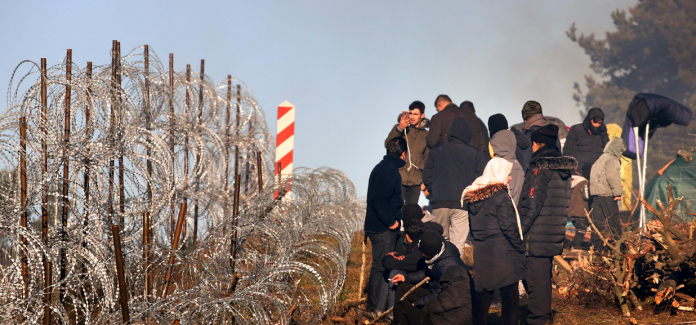The images of refugees in front of barbed wire fences pose another problem for Europe
Not facing a problem until the images have been made available to the general public on television and newspapers is a popular approach in the political landscape around the world.
The streams of migrants who seemingly appeared out of nowhere in Belarus on the border with Poland are the latest example of this political action. The human psyche tries to analyze situations within seconds.
If people who are on the run from their homeland meet barbed wire fences and tear gas at the gates of Europe, it is easy to show solidarity with the refugees. On the other hand, it takes more than a few seconds to look at the background to why people from Syria and Iraq want to ask for asylum again.
The large number of migrants in Belarus suggests political calculations
Belarus is not one of the countries that is assigned to the typical refugee routes. This fact puzzled the first people when looking at the pictures and reading the news. The high concentration of migrants did not come about by chance either.
Since the beginning of the summer, more tourist visas have been issued to people from Iraq and Syria by Belarus. This did allow the migrants to not set out on foot or to pay smugglers gangs, but rather to enter legally by plane. From that point on, many people in Belarus were stranded.
Very few people probably wanted to ask for asylum there or to start a new life. Returning after the visa has expired is also not an option. With winter approaching and the financial resources exhausted for many migrants, the only thing left is to flee forwards.
Using migration as a political plaything is not a new concept
Belarusian President Alexander Lukashenko is not the only politician who uses refugees for his political purposes. In the case of Belarus, it is clear that the West should be viewed in a negative light.
Playing with hope is hardly better than smugglers who lure refugees with the prospect of a better life in Europe, the USA or other parts of the world.
What remains are people who find themselves in a hopeless situation and only slowly come to the realization that they have come far less close to the their intented destination than originally thought.
The migration of refugees also raises uncomfortable questions
Can people fleeing war, famine or catastrophic economic conditions choose their future place of residence themselves? This question is often not answered with regard to racism or other ideas that have inhuman traits. In truth, it is precisely this question that would allow us to come closer to solving a recurring problem.
If there were quotas from leading industrial nations that would be willing to accept a percentage of people in crisis situations, the distribution of refugees would no longer take weeks or even months.
The discussions that are led by people in positions of political power, on the other hand, are careful not to put themselves in an awkward position as far as possible. Images showing refugees in front of border fences disappear for a short time from the public eye, but the problem can flare up again at any time.
Solving international crises and conflicts only in practice and not in theory is one of the factors that will continue to drag out the human suffering of refugees in the future.


